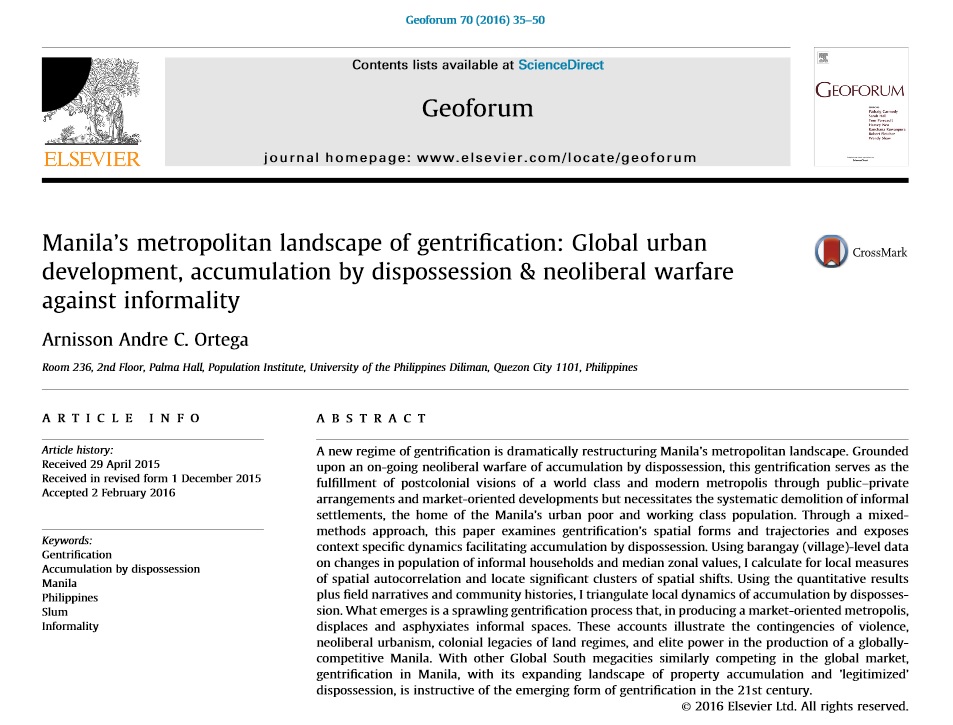Dr. Arnisson Andre C. Ortega, Assistant Professor at the UPPI, has published anew in an international journal in February of 2016. This comes after a research article he co-authored, Mega-regions in the Philippines: Accounting for Special Economic Zones and Global-local Dynamics, a UP International Publication Award-winning article, was printed in volume 48 of the journal Cities in November 2015.
Published in Geoforum (Vol. 70, pp. 35-50), one of the top geography journals worldwide, Dr. Ortega’s Manila’s metropolitan landscape of gentrification: Global urban development, accumulation by dispossession & neoliberal warfare against informality examines the phenomena of gentrification in metropolitan Manila.

This journal article has also won a UP International Publication Award.
The following is the abstract of the research paper:
“A new regime of gentrification is dramatically restructuring Manila’s metropolitan landscape. Grounded upon an on-going neoliberal war fare of accumulation by dispossession, this gentrification serves as the fulfillment of postcolonial visions of a world class and modern metropolis through public–private arrangements and market-oriented developments but necessitates the systematic demolition of informal settlements, the home of the Manila’s urban poor and working class population. Through a mixed methods approach, this paper examines gentrification’s spatial forms and trajectories and exposes context specific dynamics facilitating accumulation by dispossession. Using barangay (village)-level data on changes in population of informal households and median zonal values, I calculate for local measures of spatial autocorrelation and locate significant clusters of spatial shifts. Using the quantitative results plus field narratives and community histories, I triangulate local dynamics of accumulation by dispossession. What emerges is a sprawling gentrification process that, in producing a market-oriented metropolis, displaces and asphyxiates informal spaces. These accounts illustrate the contingencies of violence, neoliberal urbanism, colonial legacies of land regimes, and elite power in the production of a globally competitive Manila. With other Global South megacities similarly competing in the global market, gentrification in Manila, with its expanding landscape of property accumulation and ’legitimized’ dispossession, is instructive of the emerging form of gentrification in the 21st century.”
Share
